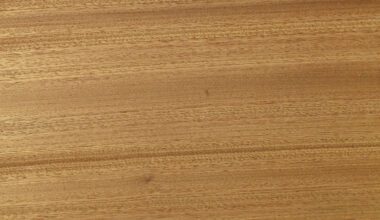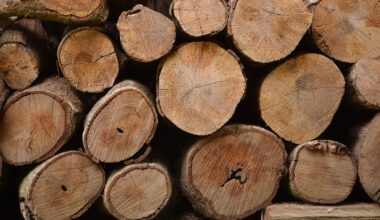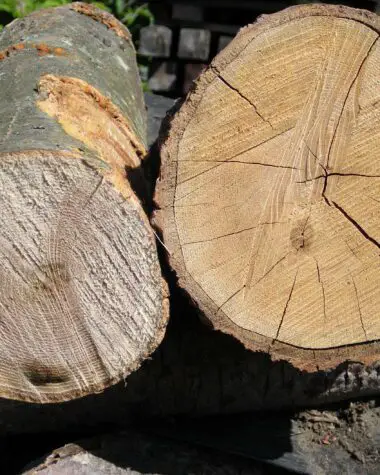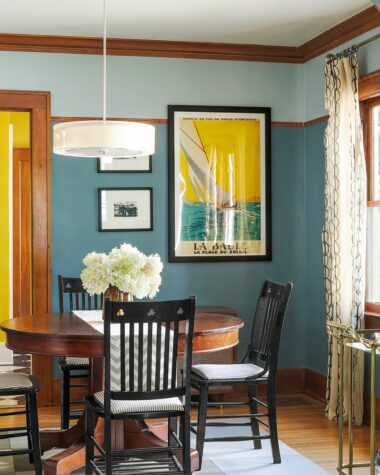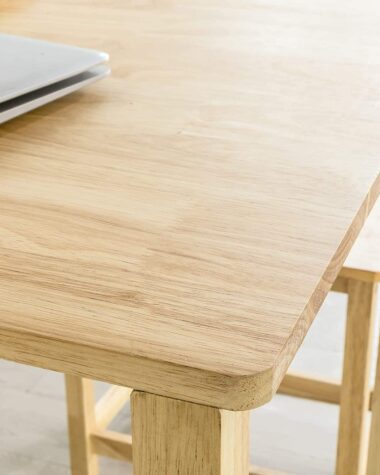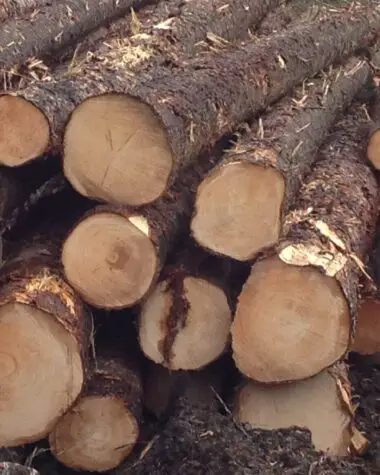Cherrywood is a hardwood harvested from the American black cherry tree native to North America. This wood type is also known as black cherry, rum cherry, and black mountain cherry.
Considering the unique properties and uses of cherrywood is worth cherishing aside from the other hardwoods that you already encountered. Here are some important things to keep in mind when you begin dealing with cherry wood.
General Properties of Cherrywood
The color of cherry wood darkens as it ages. Due to prolonged exposure to light and air, the hue turns from a pale pinkish tone to a deep reddish-brown tan. The rate of color change is quite rapid.
Initially, the fresh wood, when partially covered, can develop shadow lines within hours. These lines can be difficult to remove with sanding or any other process. Remember to keep freshly acquired cherry wood completely covered or exposed to ensure uniform color change on the wood.
After a few weeks, the color change slows, and the darkening becomes more gradual. Cherry woods with market finish often use UV blockers to keep the tanning process under check but cannot stop it completely.
Many absorbent spots on cherry wood and curly figures on the wood grain may need help with achieving a uniform finish. These two characteristics may result in getting a mottled, blotchy, and uneven-colored surface.
Some people do not mind the look and consider it a natural beauty of cherry wood. But if you are particular about a uniform finish, wipe a small portion of the board with mineral spirit to check the mottling tendency.
This wood species’ straight-grained characteristics are primarily responsible for its excellent workability. Many people prepare the wood before staining it because the act of staining might cause blemishes. Normally, a sanding sealer or a gel-based stain is advised.
Uses of Cherry Wood
Cherry is used in several ways. In the USA, it is frequently utilized to create 18th-century Colonial and French Provincial designs. Furthermore, this kind of hardwood can be used in a wide variety of applications, such as:
- Furniture
- Millwork
- Flooring
- Doors
- Boat interiors
- Musical instruments (such as pianos and violin bows)
Types of Cherrywood
There are common types of cherry trees from which two different kinds of wood can be extracted.
Black Cherry
You may find this wood in any lumberyard that sells cherries. Due to the warm patina, the black cherry tree is highly prized for its wood. Although the black cherry tree’s fruit is delicious, it is more commonly employed for its lumber than its fruit. The sweet cherry tree is where we get the bulk of the cherries we consume.
Sweet Cherry
Sweet cherry wood, an Asian relative of black cherry, is less common in the United States. This is because the tree is smaller and produces less lumber, and the sweet cherry is mostly grown for its fruit. This type of cherry tree is tougher than black cherry.
More about Cherry wood
The color difference in cherry’s whitish sapwood and pinkish heartwood looks more distinct as the wood ages. The heartwood darkens, giving a darker red-brown tone, but the white sapwood doesn’t.
Read: Sapwood vs. Heartwood
The American Black Cherry Tree’s height and diameter might change depending on the growth environment. It can reach heights of up to 100 feet and a diameter of 4 feet under the best conditions for growth.
Meanwhile, the majority of cherry trees are 50–80 feet tall and 2-4 feet in diameter. They can grow for up to 250 years before reaching their peak height, which could happen in as little as 15 to 20 years.
In the US, cherry trees rank fourth in lumber harvesting after oak, poplar, and ash. The Allegheny Plateau produces the most valuable cherry wood. However, the American Black Cherry Tree is found in profusion over much of the eastern US.
These cherry forests’ proximity reduces carbon footprint since fewer transit routes connect the forest, the mill, and the artisan. By substituting imported rainforest woods for American black cherry lumber, you may help protect some of the planet’s most biodiverse wildlife habitats.
Other Hardwood Types
- Ipe Wood– It is also called Brazilian walnut or ipe (pronounced e-pay) wood decking. It is a stunning exotic wood from Central and South America.
- Koa Wood– Koa wood is native to Hawaii and can only be harvested from the islands which is why it is very expensive.
- Poplar Wood– Poplar wood may not be as strong as other hardwoods but by treating and using different techniques, poplar wood can be worthwhile and cost-effective.
- Rubber Wood– Rubber wood has many outstanding qualities. It is durable, resilient and is eco-friendly. These qualities make it a good wood material for furniture and for home use.
- Sapele Wood– Of all the wood varieties, sapele is known for its natural beauty and its unique wood grains which may interlock in a ribbon-like pattern.
- Mahogany Wood– The possible extinction of Mahogany wood cannot clear the fact that it is one of the most valuable wood types existing.
- Teak Wood– There are countless reasons why teak wood is prized for its value.
Conclusion
If you are looking for a wood type to cherish, look at its name, and you’ll find cherry wood. More than this, it holds wood properties that are awesome for hardwood. Remember how it changes color over time, which manifests how colorful your life would be if you consider this on your next wood project.

